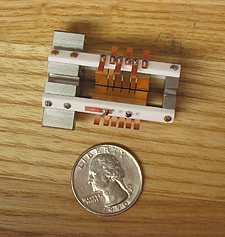
Although it isn’t likely that assemblers will need to schedule just-in-time parts deliveries to an accuracy of ±1 second over 3.7 billion years, it is interesting to note that physicists at the National Institute of Standards and Technology have built an enhanced version of an experimental atomic clock that that is now said to be the world’s most precise clock.
Based on a single aluminum atom, the new clock would neither gain nor lose one second in about 3.7 billion years, according to measurements to be reported in Physical Review Letters. “This paper is a milestone for atomic clocks,” says NIST postdoctoral researcher James Chou, who developed most of the improvements. You can read morehere.
Clocks have myriad applications in areas other than manufacturing. The extreme precision offered by these optical clocks is already providing record measurements of possible changes in the fundamental constants of nature. Next-generation clocks might lead to new types of gravity sensors for exploring underground natural resources and fundamental studies of the Earth. Other possible applications may include ultraprecise autonomous navigation, such as landing airplanes by GPS. As electronics engineers continue designing CPU chips with ever-faster clock rates-beyond the 3 to 5 gigahertz common today-they will eventually need timing standards near this level of accuracy.
Recent Comments
Helpful for Trainees
Cable Assembly Manufacturers
Huawei for manufacturing?
should have a scanner and then 3D print the repair
IPC-A-610 and IPC-j-std-001